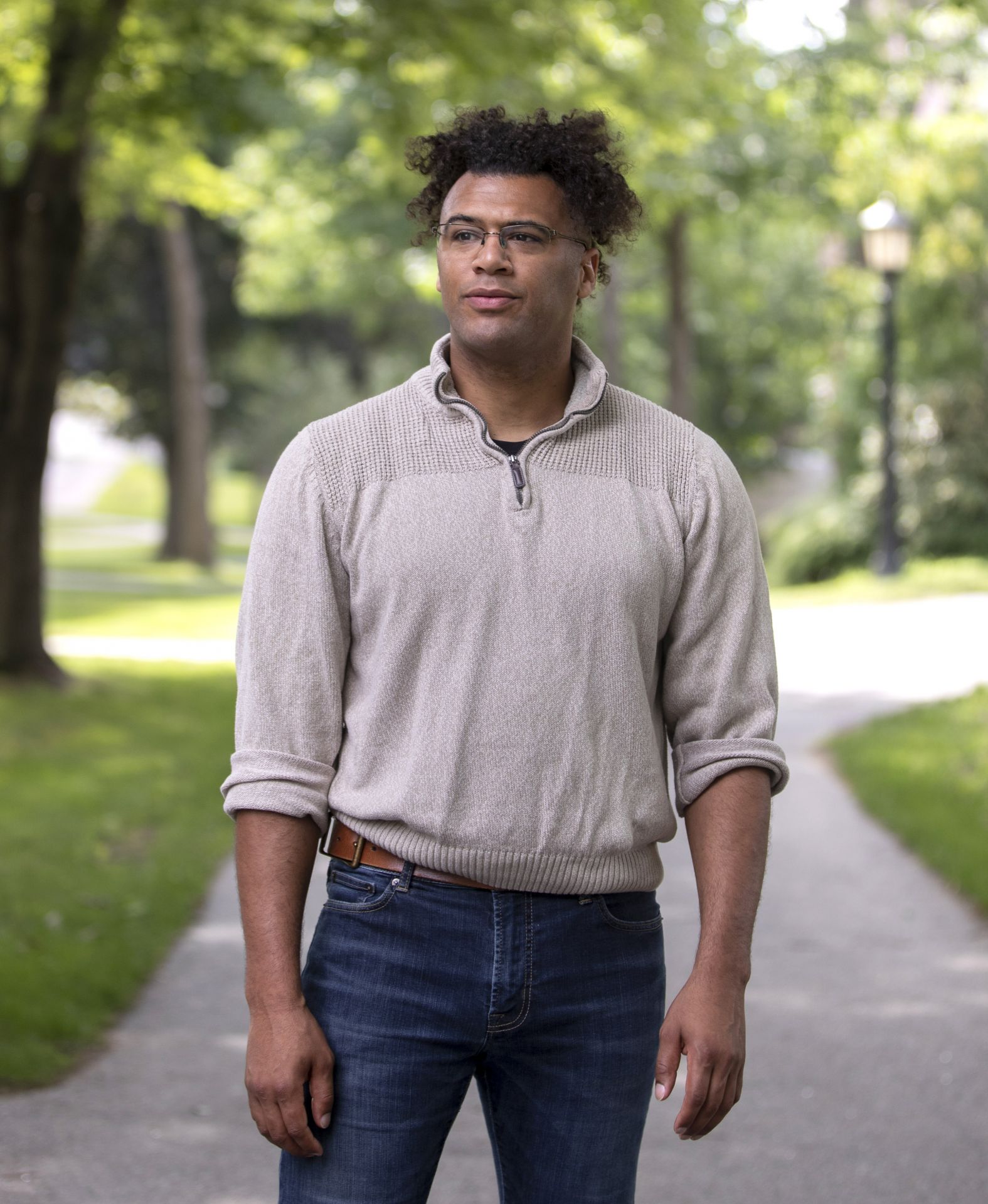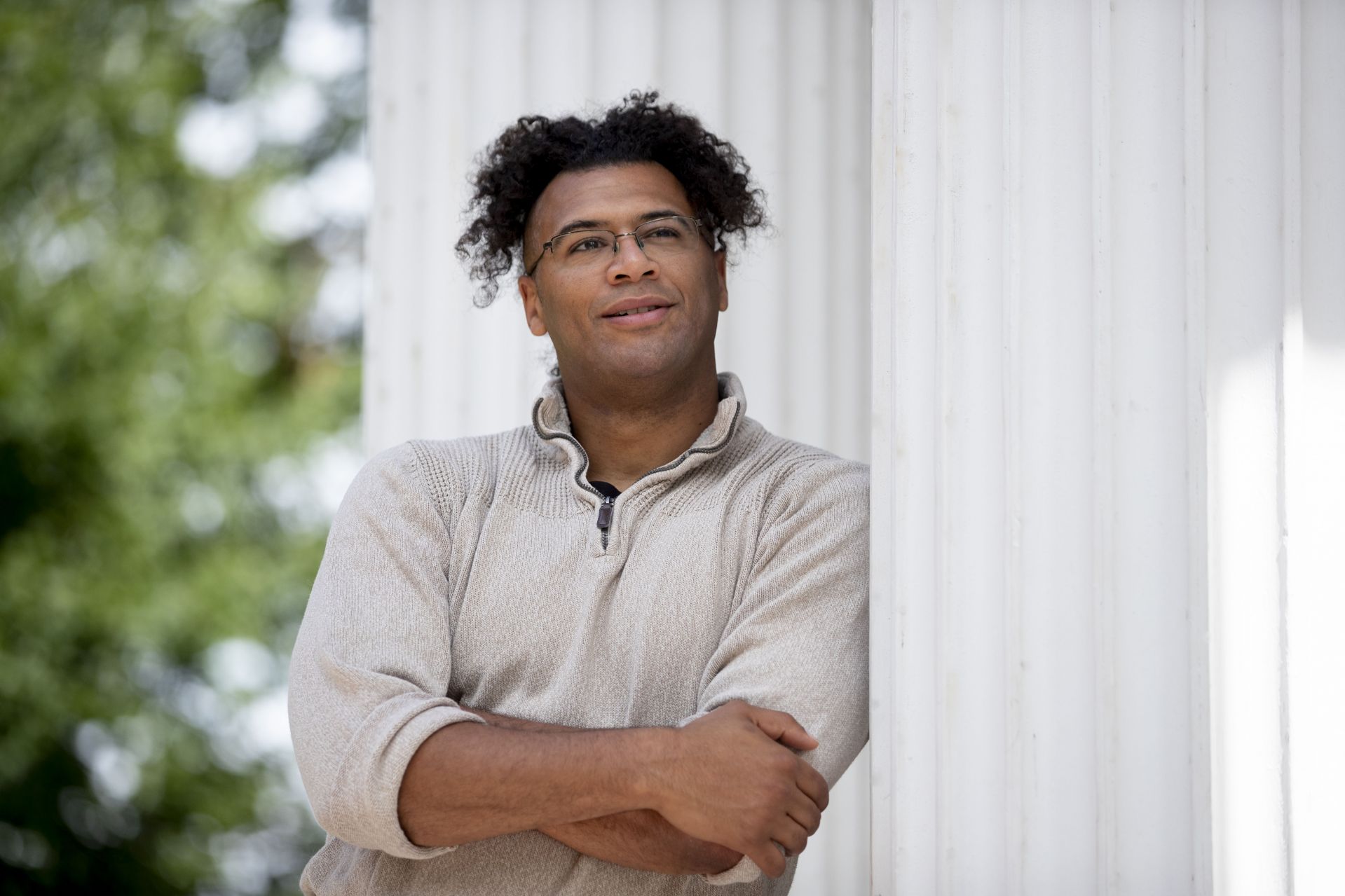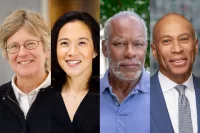
Each week this fall, we’ll introduce new Bates professors who have tenure-track positions on the faculty.
This year’s nine tenure appointments are in the disciplines of art and visual culture, classical and medieval studies, economics, English, environmental studies, dance, politics (two appointments), and psychology.
This week we introduce the eighth of our nine new faculty members, Brian J. Evans.
Name: Brian J. Evans
Title: Mellon Postdoctoral Fellow and Lecturer in Dance
Degrees from: University of Washington, M.F.A. in dance; Gustavus Adolphus College, B.A. in dance.
His work: Evans describes himself as a “citizen artist,” a term with a few definitions, including this one from the Aspen Institute Arts Program. While comprising two powerful words, it’s about connecting the two identities, citizen and artist, to empower artists like Evans “to literally dance through life,” he says.
Why dance? When asked how he’s been able to make dance his life’s work, Evans offers a short answer and a longer one.
The short answer: “Male privilege, luck, support from family, and my work ethic.”
The longer answer tells a story that begins at his undergraduate college, Gustavus Adolphus, in St. Peter, Minn., where he took a dance class to fulfill a general education requirement. “Between the choice of drawing and dance, I picked the latter,” he says.
Evans’ hometown is Gaylord, a small town of about 2,300, located about an hour southwest of the Twin Cities, where the top employers are the county and a food-processing plant. While not exactly a Footloose type of place in its conservatism, Evans says that “dancing was not something encouraged for boys in my town.”
But that nearly random choice to take a dance class opened the door to a career that Evans didn’t know existed. “When my professor mentioned in passing that I could do this for a living, I had no idea what that entailed.”

The dance class led to a dance major and then to an adjunct professor’s invitation to audition for Stuart Pimsler Dance and Theater. It was the best kind of audition because Evans didn’t know it was one. “I just thought it was supposed to be a fun experience. So with all the confidence of someone just trying something new and having a blast, I wasn’t nervous.”
He got the job — a four-month, $5-per-hour apprenticeship — that turned into an $8-per-hour company appointment. In 2018, by that time musical director and a principal dancer, Evans left to pursue a master’s in fine arts at the University of Washington that “allowed and empowered me to come to Bates and teach.”
Ease the pain: Evans has found a tried and true medicine to ease those sad moments of self-doubt and isolation: turn your focus to people.
For example, he says, joy comes from “watching once-strangers dance together in community, or seeing the magic that occurs when disparate elements of an art experience come together.”
When the brain asks the body to create what we call “dance,” the result is more than just a body in motion: It’s the creation of meaning.
Or seeing student artists “taking their first steps back into themselves after being away from their bodies for such a long time, or the awesome power of people deciding that things can be better.”
“People astound me in their capacity for extraordinary accomplishment in the face of systemic oppression and their resilience to continue to get up every day to continue the work.”
Embodied in the body: Evans’ work is driven by the notion of “embodied arts,” a term that describes artistic endeavors where the human body is key to how we make sense of the world.
In other words, while the brain is typically ceded prime authority when it comes to cognition, let’s not forget the body’s role, says Evans. When the brain asks the body to create what we call “dance,” the result is more than just a body in motion: It’s the creation of meaning.
In this sense, the body, as it experiences the world, serves our brain’s need to do complex thinking. Or, as Evans says, the need “to hold more than one story” at a time.

Children approach the world as embodied artists, says Evans. “They tend to take on everything with everything they have, body and mind,” he says. “As we grow up, some of that embodiment gets stripped away.”
That’s where an arts-focused liberal arts education comes in handy, he says. “An embodied liberal arts education can give us the crucial ability to, in real-time, literally, dance through life — and the power to be unabashedly human.”
Why teach dance? Dance and the embodied arts speak a beautifully complex language that, unfortunately, “most people don’t know,” says Evans. “Worse, they are made or taught to be afraid of this embodied language.”
Teaching students this language “gives me a sense of purpose,” Evans says. “It excites me thinking of the impact I may have on a future senator, teacher, mechanic, philosopher, astrophysicist, etc. who found something in my class made them more empowered to embody their work and life.
“The hope with any teaching I do is that students find something useful in what I teach, and then attach that to their drive of curiosity and their belief that learning is never finished. As an extension of an academic setting, the expectation is not to ever finish the process of learning.”
The good twin: After more than a decade living and working in Minneapolis–St. Paul, Evans says he would “pit any art scene in the nation” against the Twin Cities’ when it comes to artists’ “ability to find a diverse array of work to tap into.”
Admitting to a “privileged vantage point,” Evans says he was able to build an arts career through dance performance and commissions; teaching stints and residencies, including as an adjunct at Macalester College; and other creative gigs that used what he calls “auxiliary skills” like music and video editing, Qlab multimedia programming, and musical direction and accompanying — not to mention welding, carpentry, and three days of being a LYFT driver.


